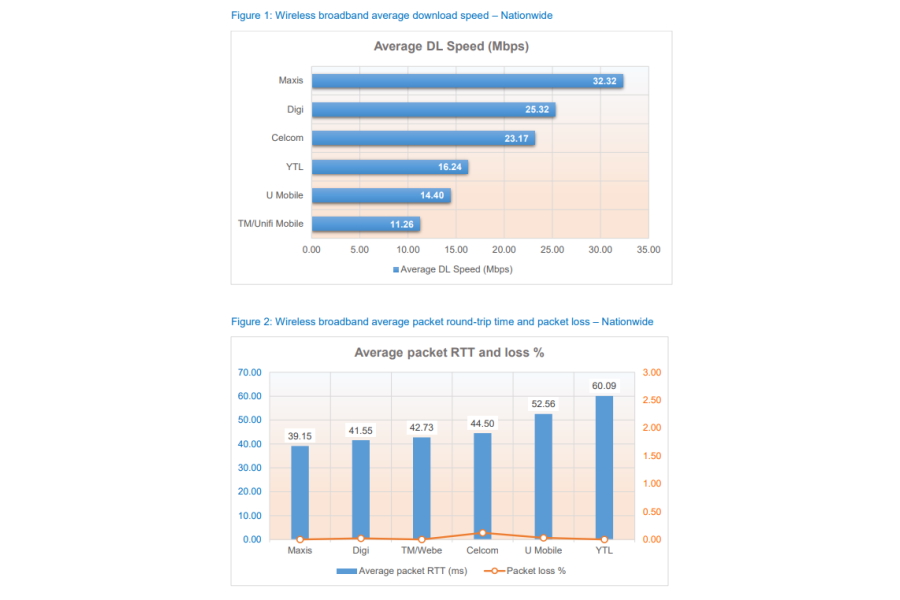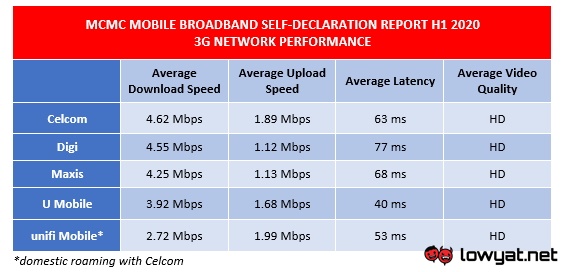Even though these SDR’s are categorised as Quality of Service NPR, they are not subjected to the regulator’s Mandatory Standards since the data on these reports were sourced from external parties. Here is the 4G network performance of five main telcos in our market based on Ookla’s data from 1 January to 30 June 2020, as listed on SDR H1 2020:
While it is quite clear that Maxis still dominates the chart as expected, the data above showed that the telco performance for download speed has dropped at a rate of around 2Mbps when compared to the official 2019 MCMC NPR. The same also applies to Celcom who has dropped at an even lower rate of almost 3Mbps. It might be possible that the recent increase of usages during the early part of the Movement Control Order (MCO) period may have had some impact on the average performance of these telcos but then again, the performance of Digi, U Mobile, and unifi Mobile has increased when compared to 2019 MCMC NPR. Since the 2019 MCMC NPR and the regulator’s Mandatory Standards do not cover upload speed performance, we are not able to compare the figure above. When it comes to latency, the figures from all the telcos above were much lower than the 2019 MCMC NPR. Meanwhile, the SDR H1 2020 has also included the performance figure for 3G network in Malaysia:
In general, the average 3G download speed still met MCMC’s Mandatory Standards for wireless broadband service, which is not that high anyway, at only 1Mbps download throughout for at least 80% of the time. We are not able to make any comparisons for the data since the 2019 MCMC NPR also does not cover 3G network performance. According to MCMC, its purpose to publish these SDRs is so that consumers can utilise them to make an informed decision. That being said, they also revealed that our mobile network capabilities need to be improved further as the network performance figures showed that we are still behind our ASEAN neighbours such as Myanmar, Thailand, Vietnam, and Singapore.


